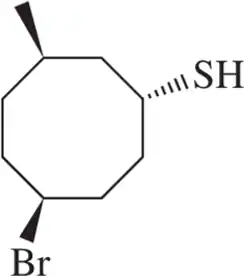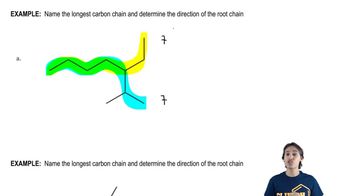Textbook Question
Draw the structure that corresponds to the name provided.
(e) (1S,4S)-4-isopropylcyclopent-2-enethiol

 Verified step by step guidance
Verified step by step guidance Verified video answer for a similar problem:
Verified video answer for a similar problem:



 5:34m
5:34mMaster How to name sulfur-containing compounds. with a bite sized video explanation from Johnny
Start learning